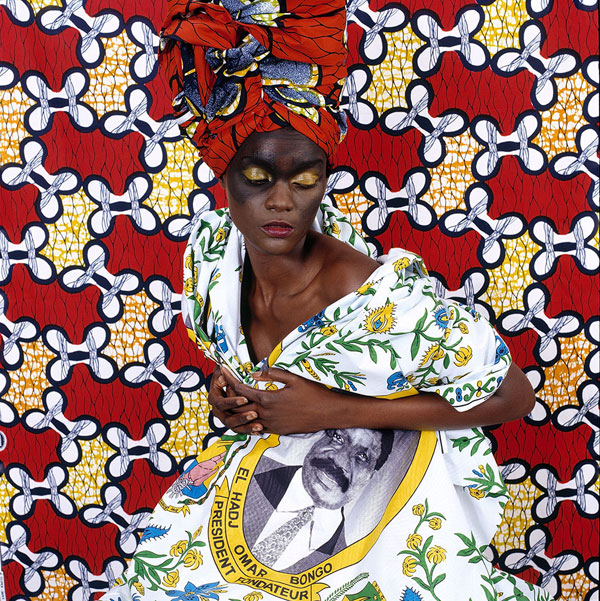2007
Lieu de passage et d’échange, l’Europe importe une technique d’impression sur tissus de ses colonies indonésiennes, et exporte ensuite en Afrique ces tissus imprimés en Hollande et en Angleterre qui seront ensuite portés dans toute l’Afrique et serviront pour certain, » pagnes à effigies, » de moyen de communication politique.
A travers WAX SPIRIT, c’est l’histoire coloniale de l’Europe et les temps post- coloniaux des indépendances qui défilent à travers une représentation de portraits faisant référence aux peintures européennes de pouvoir. Wax Spirit parle aussi des hommes et des femmes venus de l’Afrique, composant le métissage européen et l’ayant enrichi de leurs traditions. Sous les couleurs chatoyantes des tissus, c’est aussi l’axe nord-sud qui se trouve évoqué, les problèmes de la pauvreté, du déracinement, de l’exode et de l’immigration.
The importation by European traders from the colonies in Indonesia of the technique of printing on cloth led to the exportation of printed cloth from the Netherlands and England to Africa, where the technique was then subverted to political ends, with clothing often serving as a means of political expression and contestation.
Wax Spirit displays the colonial and post-colonial history of Europe through the representation of European portraits designed to connote power. Wax Spirit is also the story of the African men and women that came to Europe, mingling with their hosts and enriching their culture with African traditions. The vibrant colours of the cloth evoke the North-South axis of these people forced by poverty to exodus, immigration and rootlessness.
